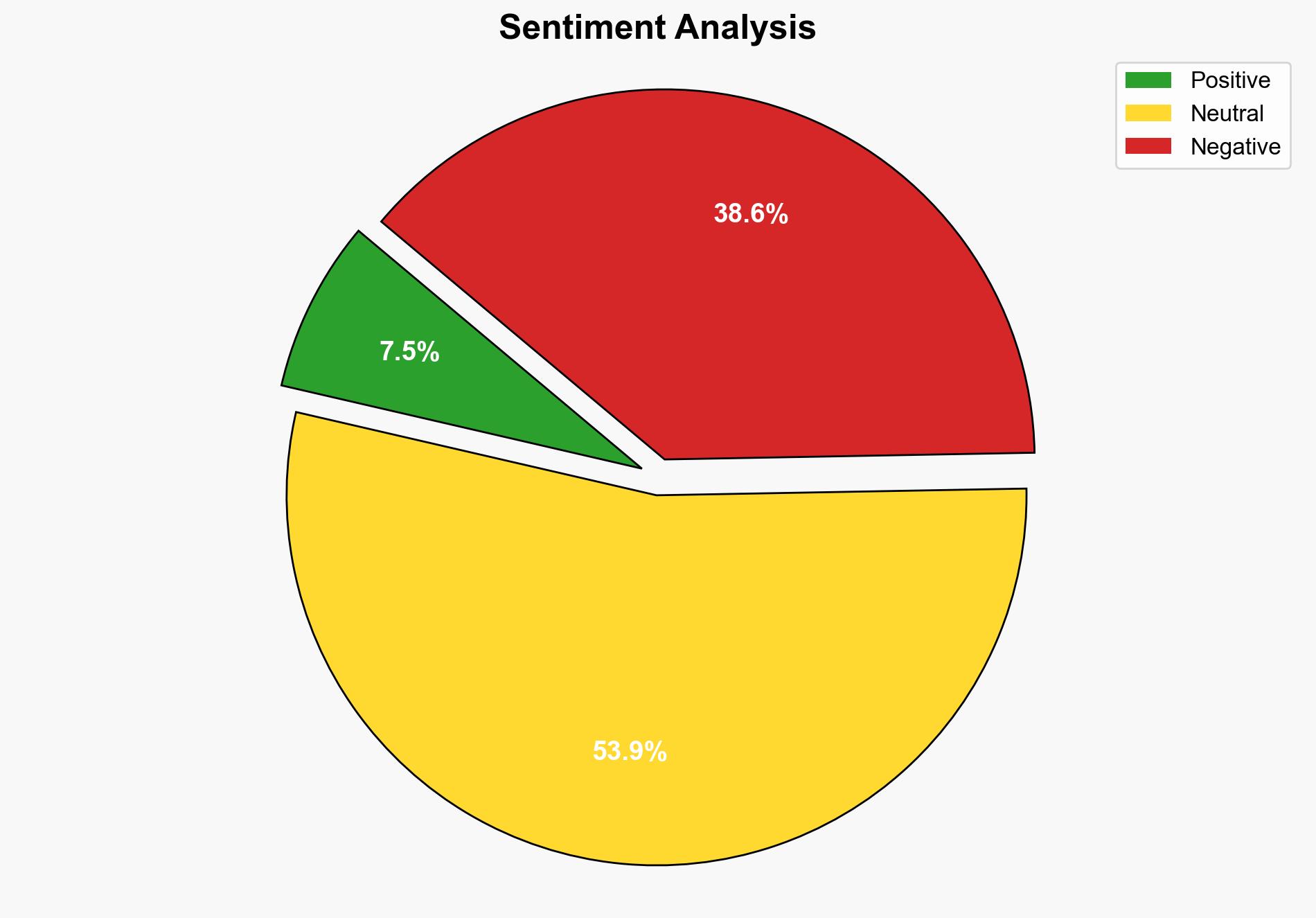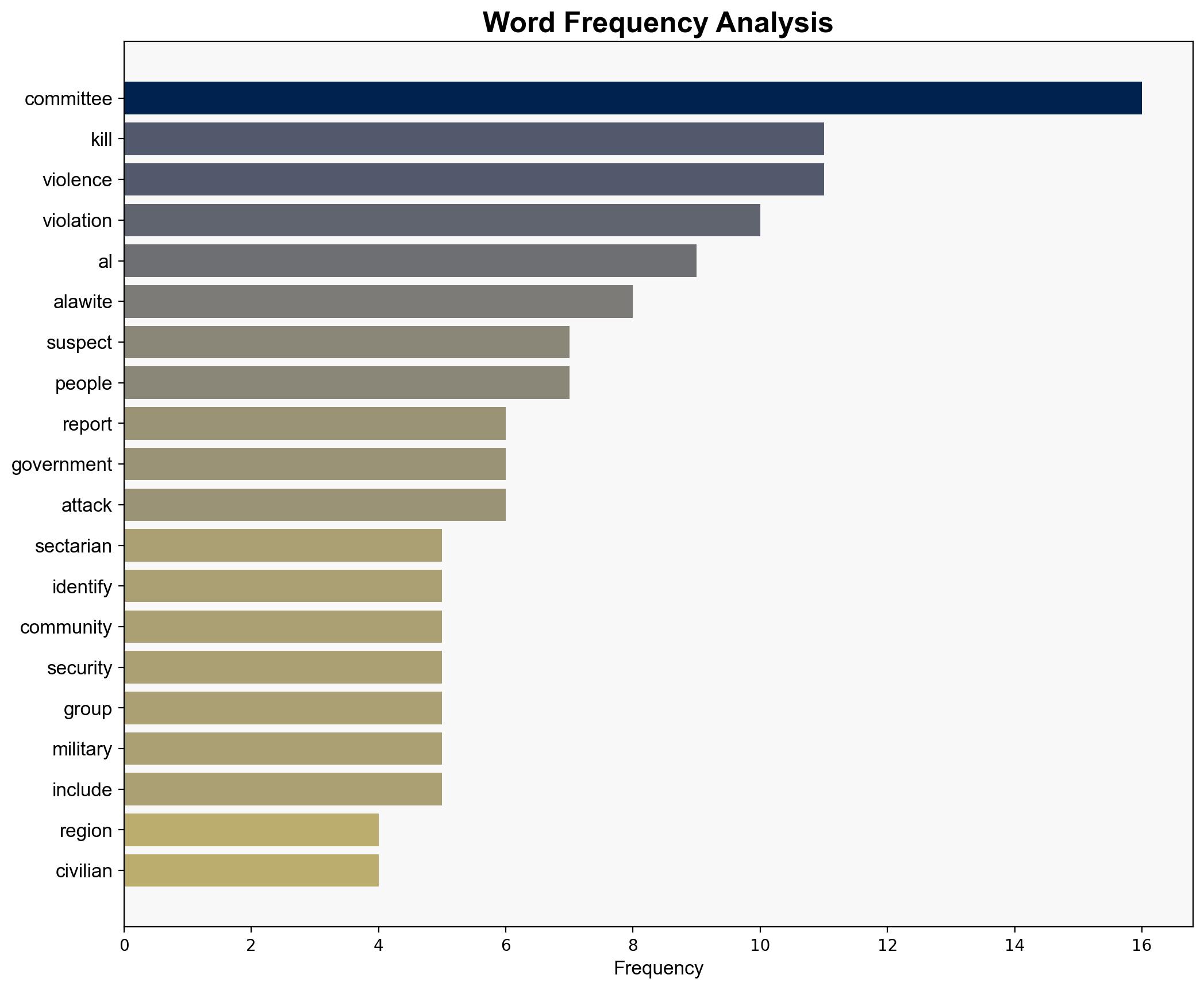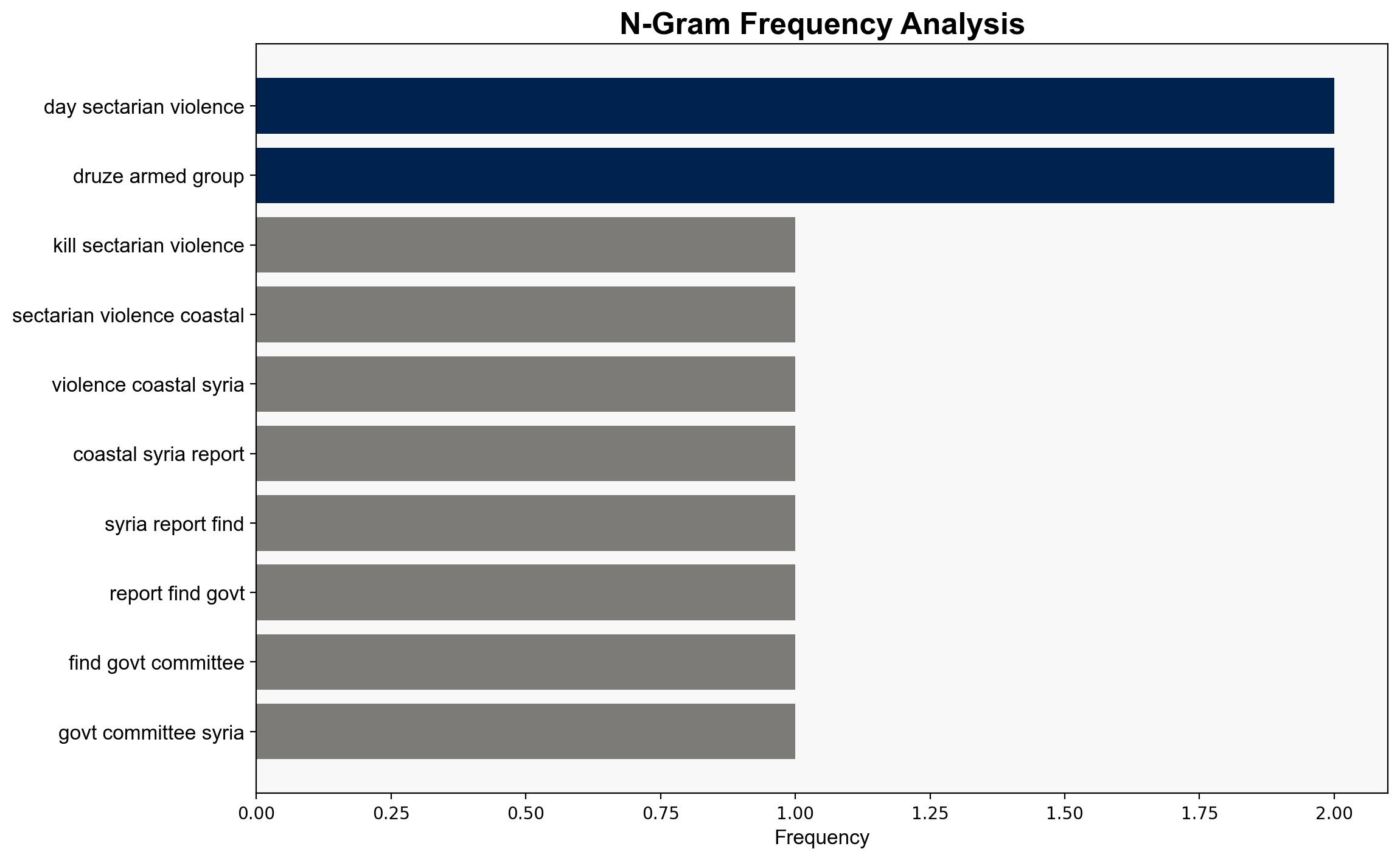More than 1400 killed in sectarian violence in coastal Syria report finds – Al Jazeera English
Published on: 2025-07-22
Intelligence Report: More than 1400 killed in sectarian violence in coastal Syria report finds – Al Jazeera English
1. BLUF (Bottom Line Up Front)
A government committee in Syria has reported over 1400 civilian deaths due to sectarian violence in the Alawite region along Syria’s coast. The violence, which occurred earlier this year, underscores significant sectarian tensions and challenges to maintaining security following the overthrow of Bashar al-Assad. The committee has identified suspects and documented violations, including murder and torture, but has faced criticism for a lack of accountability and transparency. Immediate strategic focus should be on addressing sectarian divisions and enhancing security measures to prevent further escalation.
2. Detailed Analysis
The following structured analytic techniques have been applied to ensure methodological consistency:
Causal Layered Analysis (CLA)
The surface events include the reported mass killings and sectarian violence. Systemic structures involve the military and security forces’ alleged involvement and the government’s response. The prevailing worldview reflects deep-rooted sectarian divides, while underlying myths pertain to historical grievances and power struggles within the region.
Cross-Impact Simulation
The violence in Syria could exacerbate regional instability, potentially affecting neighboring countries like Lebanon and Iraq, which have their own sectarian dynamics. Economic dependencies, such as trade and refugee flows, may also be impacted, increasing regional tensions.
Scenario Generation
Scenarios range from increased sectarian violence leading to regional conflict, to successful mediation and stabilization efforts by international actors. The most likely scenario involves continued tensions with sporadic violence, while the best case sees effective reconciliation efforts reducing hostilities.
3. Implications and Strategic Risks
The ongoing sectarian violence poses significant risks to regional stability, with potential spillover effects into neighboring countries. The lack of accountability and transparency in addressing these violations could undermine trust in governmental institutions, increasing the likelihood of further unrest. Additionally, the involvement of military forces in sectarian violence raises concerns about the integrity of national defense structures.
4. Recommendations and Outlook
- Enhance intelligence-sharing and cooperation with regional partners to monitor and mitigate sectarian tensions.
- Support initiatives aimed at fostering dialogue and reconciliation among different sectarian groups.
- Implement security sector reforms to ensure accountability and prevent military involvement in sectarian violence.
- Scenario-based projections: Best case – successful reconciliation and stabilization; Worst case – escalation into broader regional conflict; Most likely – continued low-level violence with periodic escalations.
5. Key Individuals and Entities
Yasser al-Farhan, Jumaa al-Anzi, Rama Hussein, Jana Mustafa
6. Thematic Tags
national security threats, sectarian violence, regional stability, conflict resolution




